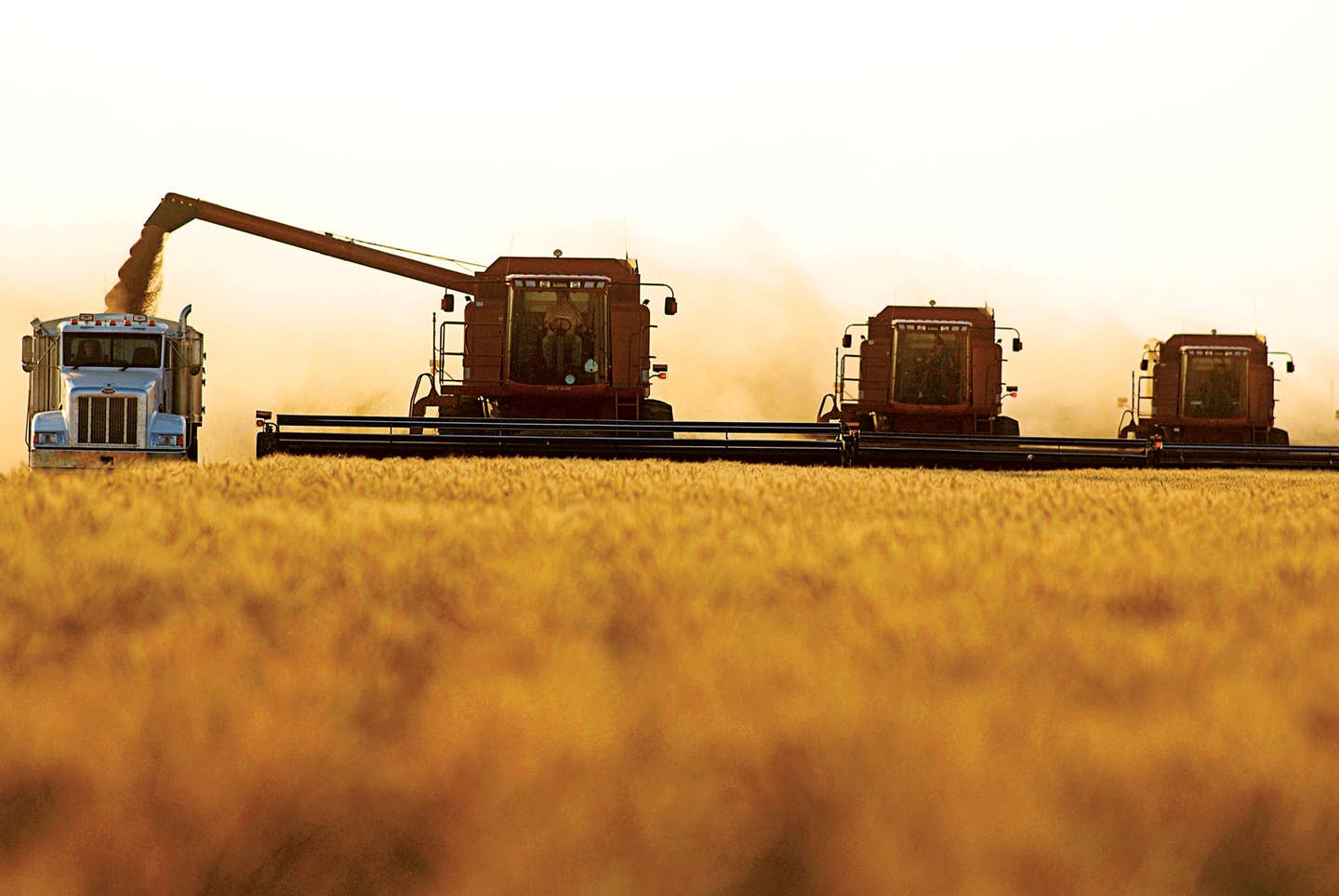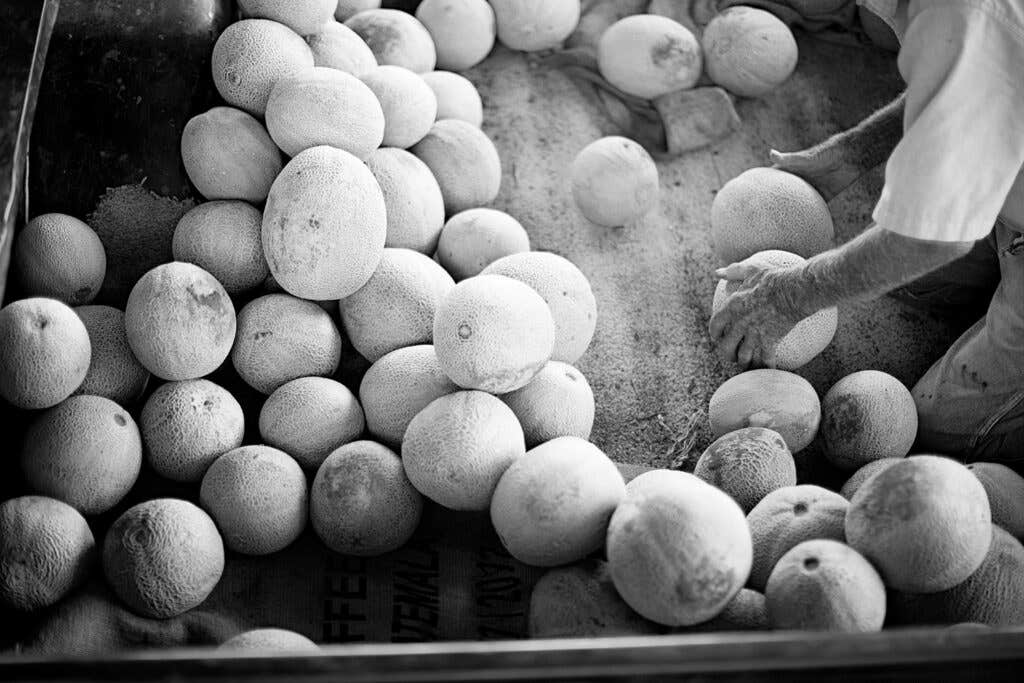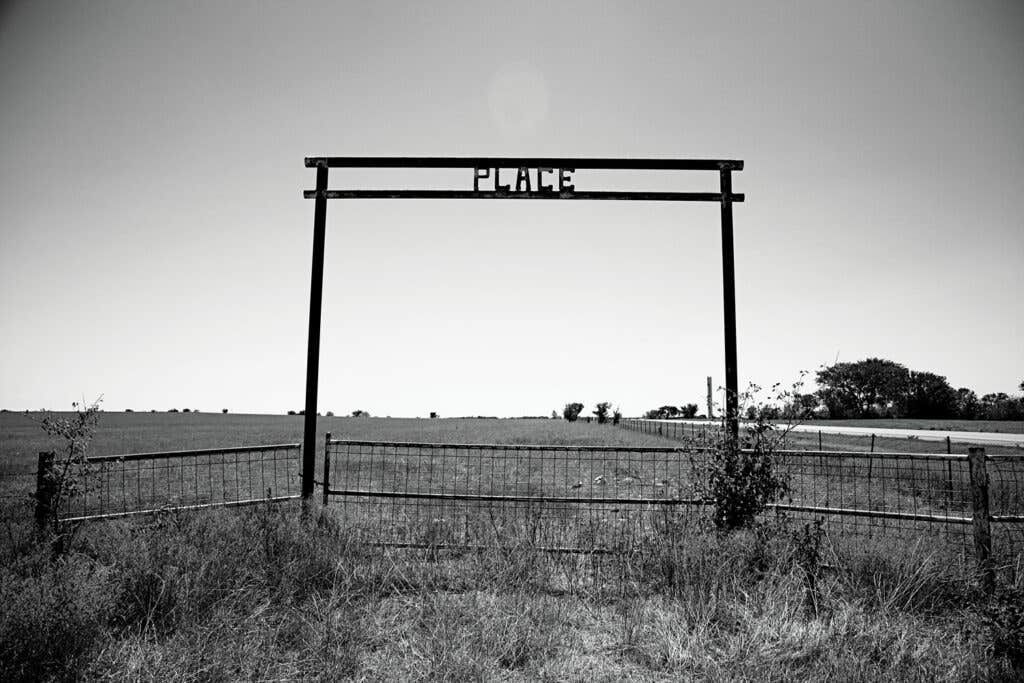
Bountiful Prairie
Wheat and corn and incomparable beef, wild berries baked into the most luscious desserts, crisp summer salads, and the best fried chicken and chili imaginable—the southern Great Plains is a fantastic place to eat. Here, on flatlands teeming with life, farmers and ranchers, foragers and chefs pass down cherished recipes and share new additions to the region’s rich culinary heritage.
The United States could be said to have a heart of flatness. What else is there in the southern Great Plains of Kansas, Nebraska, and Oklahoma besides a flatness bigger than France, bigger than Spain, nearly as big as two Germanys—almost a quarter million square miles of big, flat stability?
Actually, if you know how to look at it, there's a lot here besides the flatness. For one thing, there's plenty to eat. Ask knowledgeable chefs in the southern Great Plains, and they'll tell you about ramps growing wild; porcinis and meaty oyster mushrooms sprouting on logs; quail nesting in sand plum thickets heavy with sweet-tart fruit; wild peaches, passion fruit, and puckery aronia berries that get dried and ground for seasoning meat. Even the cattails conceal treasures; some Choctaw Indians have taught chefs how to knock the tiny seeds from ripe cattail heads to use for flour.
All of this abundance comes from a place that looks empty because it is one of the flattest places on earth. Geologically speaking, all of North America is built upon a base called the North American craton, a massive, ancient super-plate that the other tectonic plates of our continent bump and grind around. The Rocky Mountains, for instance, is the place at which the flibbertigibbet California-containing land mass of the west bumped into the central craton; so unyielding is this core of North America that not a single volcano (usually typical on such occasions) emerged from this smashup, creating what geologists call a magmatic null, a noteworthy geologic event. Where else but pancake-like Kansas, Nebraska, and Oklahoma could such a profound null be created?

Credit: Shannon Sturgis
The very steadiness of the North American craton is responsible for the region's majestic flatness, because this immovable land mass has been polished down by hundreds of millions of years of erosion by wind, by glaciers, by seas moving in and out, by rain and rivers. You read stories about Oklahomans who can't dig storm cellars because their ground is, in fact, rock; the land sits upon shale, sandstone, and clay. Many residents in the south central Great Plains are living on the stubby bases of mountains, ground down after half a billion years.
The flatness is not just a neutral thing, it is generative: It makes the prairie. Moisture, most often, comes from the sea; it rises, rolls in clouds and fog over the land, and turns to rain when it comes in contact with something that cools it—a mountain, a cold front, a low-pressure system. Washington and Oregon are wet from the moisture created by the Pacific; Vermont and Georgia are green with the evaporation from the Atlantic. But by the time clouds make it all the way across the thousands of miles of land which guard Kansas, Oklahoma, and Nebraska from the sea, the water is mostly gone.
In the days before irrigation, the old tallgrass prairie was tall because it got some water (though not enough to support many trees); the short-grass prairie was short because it got barely any water at all. The rain that does fall onto the great flatness filters down through the ground into an aquifer called the Ogallala, or High Plains aquifer system, an underground reservoir stretching from Texas to South Dakota. Agriculture and hydrofracking are in some places emptying out this aquifer, which took eons to fill. Many worry that in some parts, the prairie is going to slip from a fertile flatness to something worse, something dry, empty, and full of nothing.
If that happens, the wind will assist. The wind, regularly whirled into tornadoes, is the other signature of the southern plains, and that flatness encourages it. Cold air floods down from Canada, with nothing to block its path; hot air floods up unhindered from the Gulf of Mexico. Then, from the west, both the polar jet stream and the subtropical jet stream stir by, like fingers flicking the edges of a pinwheel, kicking off the rotation. Solid, stable, whipped by winds—the heart of flatness. But the prairie is as diverse as a rain forest, and just as beautiful.

Credit: James Oseland
"Oklahoma is the number-two state in the country for plant diversity. We follow only Oregon," explains Jackie Dill, who lives in Oklahoma and teaches wildcrafting, the art of turning wild plants into food, medicine, chicken feed, soap, and other things useful to people. "We have so many different eco-regions—wetlands and hardwood forests and prairie—and then the land rush brought European and other plants in. After the Dust Bowl era, desert plants moved in, too. I live on Iowa tribal land. I forage with a Lakota; my grandmother was Cherokee. What people forget is that for centuries this was the supermarket." Buffalo berries are one of Dill's favorite things to forage. They're spicy and go beautifully with Iowa wild sage on one of the wild bison steaks that the chefs of the southern Great Plains prize so highly.
That steak might come from Dave Hutchinson's Perfect 10 Buffalo Ranch in Rose, Nebraska, located in the Sandhills, an area of low, rolling dunes held in place by grasses covering nearly 20,000 square miles in the north-central part of the state. There the bison, who are never fed grain, spend their lives roaming free over wild pasture. Then one day Hutchinson makes a call to Rapid City, South Dakota, and a USDA-certified processing facility on wheels arrives. The rancher shoots a target animal with a thirty-aught-six rifle, and the 1,200-pound bison falls in its field, where it is winched up and butchered into more manageable chunks.
"They never know stress," Hutchinson says. "They eat native grass, what they were meant to eat. Big bluestem, little bluestem, prairie sandreed, switchgrass, meadow grass, prairie cordgrass. A lot of people look at a prairie and they see grass. But this is not grass like on a golf course. This is a whole other thing. Different clovers, bittersweet; in the fall it turns orange. Yucca. Cactuses. I guess you could say I'm a grass-type person; I like to look at it. It's beautiful stuff. And it makes a good steak."
It's a steak that comes from a big, flat place that is so big, so flat, and so stable it's easier to fly over, or drive straight through, than to consider in its vast majesty.
Keep Reading
Continue to Next Story










